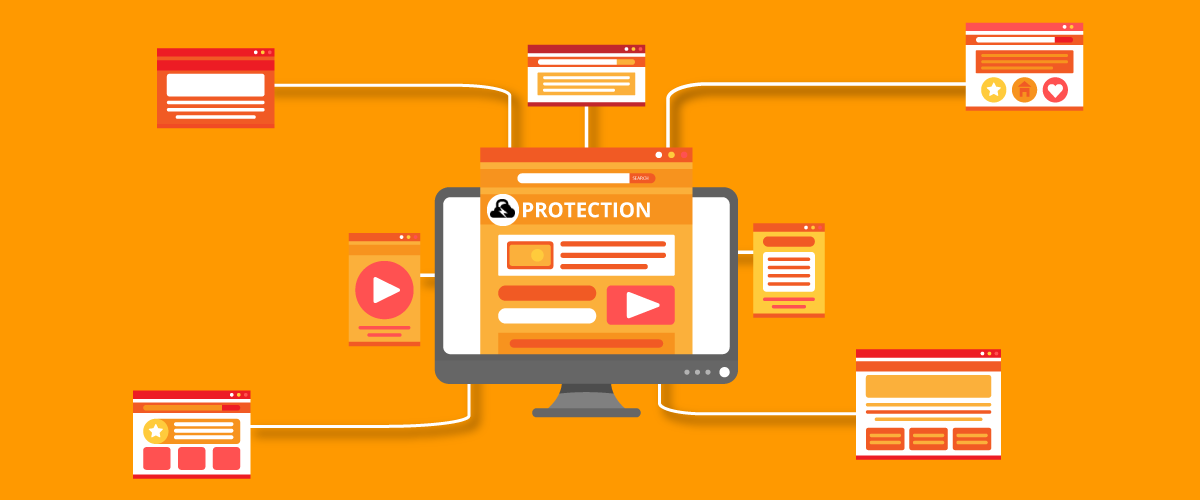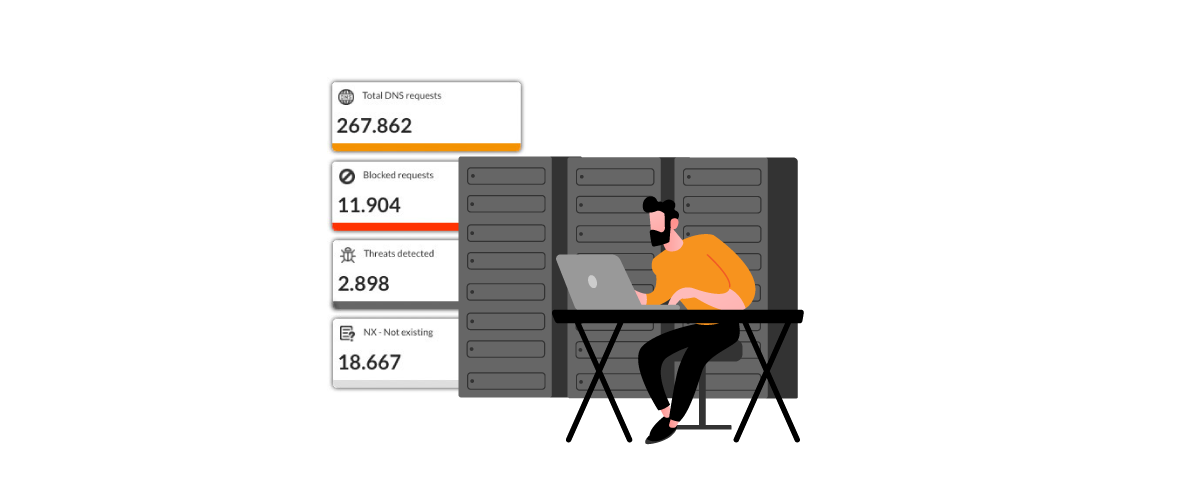
How filters improve computer protection
How can web filters improve computer protection? This question is so pertinent that it is included in many of the tests for security specialist certification. It is commonly believed that in order to protect a device from cyber attacks, a security solution is needed that is complex to manage and, most of all, expensive.
Given that in corporate networks data protection is a vital issue, often to be resolved with high-level strategies and tools, it is equally true that in an SMB, a local government, or a school, it is often enough to implement a good web filter to protect computers and save significantly on costs. Let’s see, then, how a web filter can improve the security of a computer.
1. Why improve computer protection
Today, it is a priority to improve computer protection; the risks involved are too great. More and more often, the same computer, tablet, or smartphone is also used for work as well as for entertainment and recreation and by multiple family members. Likewise, computers made available to multiple users in a library, school, or local government office are subject to very high security risks. Moreover, if one device is attacked, the repercussions on the entire network could be drastic.
So, it is more than appropriate, in some cases even mandatory by law, to provide some measure of protection for one’s devices, a solution that protects against the most common threats and allows users to browse the web with peace of mind.
Today, it is well understood what techniques are most commonly used by cyber criminals. First, it is important to specify that almost all attacks are carried out by targeting the so-called end point, which is any device, computer, smartphone, or tablet, that accesses a network. Generally, cyber criminals can act with a simultaneous attack on several users, or they can use the login credentials of a specific user to break into the corporate network without anyone’s noticing that whoever is logging on is not who he or she thinks it is.
In many cases, so-called social engineering strategies are used, i.e., cyber criminals seize useful data through devious communications. Alternatively, a cumulative attack is carried out, relying on users’ lack of cyber security awareness.
Among the most common techniques is phishing; alternatively small programs called malware are used. Ransomware, by far the most common, is a type of malware that aims to freeze or steal corporate data with the goal of demanding a ransom. The goal of phishing, on the other hand, is to obtain a user’s login information for a service, such as home banking.
Whatever technique the criminals choose, the approach is always through contents. It can be an email or a message from a messaging program which contains an invitation to click on a link or open an attachment. Once the user clicks on the link, be it in the case of a phishing message or a malware attack, the damage is done. Following the access to a certain website, a connection takes place that can prove fatal.
>> FlashStart is a leader in competitiveness → Try it now

2. How a web filter improves computer protection
If the absolutely most common vehicle of a threat is a simple link, it goes without saying that the first protection to activate, for home users and businesses alike, is a browsing filter. These are browsing monitoring services that are often integrated into more complex protection solutions, or even available independently, with very little cost and guaranteed effectiveness.
Web content filters are considered so important that they have prompted many countries, including Italy to make them mandatory for ISPs, internet access providers.
All URL filtering services perform the same task, with different results. URL filtering blocks the loading of a web page corresponding to a certain URL, and, if a user attempts to reach a blocked URL, he is redirected to another page.
Browsing filters are based on a database – a black list – which ranks URLs by topic. These databases are built and kept up-to-date by manufacturers of browsing protection solutions. Not all of them are reliable; the quality of the site-blocking service also depends upon the quality and frequency with which these databases are updated.
A URL filter can block individual addresses or categories of addresses and sites. Blocking URL categories, which are defined by categorizing the words contained in a site’s pages, is more efficient, because it groups together large clusters of URLs which are considered dangerous, and is also faster.
In general, the provider of a filtering service creates categories and populates them with groups of URLs which share the same topics. For example, all known URLs used for phishing attacks will be placed in the “phishing” category, or, through geoblocking, attacks from countries known for malicious activity could be circumscribed by creating categories based on the destination IP. Today, the best filtering services leverage machine learning to identify and categorize risky websites more quickly.
How does a web filter provide better protection to a computer? Precisely because, by its very nature, upon a user’s clicking on a link, the filter will preemptively check whether the landing page is a “suspicious” page, that is, whether the referring site is on its blacklist. If so, it will block the link between the user’s computer and the malicious site, all in a time of milliseconds, to the point where the user will not notice the inspection. The time required for the inspection is another feature to take into account when choosing a browsing filter: the shorter it is, the better quality the filter will be.
>> FlashStart is totally in the cloud and easily activated → Try it now
3. Choosing the best filter to protect a PC
A variety of content filtering tools exist, some free and some for a fee. As it should be, paid services are far preferable to free ones, in any context, from the home environment to the SME, school, or local PA.
Browsing programs such as Google Chrome, Edge, Safari, and Firefox offer a free default filter, the classic “parental control,” easily activated from the browser settings. It is a tool with limited functionality, little customizability, and relies on blacklists that are not always updated. Also, there is to take into account that it is easily disabled and blocks browsing only from the browser used at that particular moment.
Similarly, parental controls found on web services, such as YouTube, or on streaming services, such as Netflix – through the “children’s” profile setting – restrict browsing or choice of contents being offered.

4. Why you should choose a DNS filter
The best web content filtering service is certainly DNS filtering, which is browsing filtering based upon DNS (Domain Name System) control. Why?
Because a DNS filter checks the quality of the server that hosts a certain internet site, to which a certain URL corresponds. With DNS filtering, one does not risk falling for the tricks that malicious people can use in masking the domain names of a site, the contents of web pages, and changing the path between the request and the site. DNS filtering checks whether or not that server’s address is blacklisted. So, the black lists of a professional filter are certainly more comprehensive and up-to-date than any parental control tool.
FlashStart is an Italian company which provides DNS filtering solutions for businesses, schools, and institutions, as well as for home browsing. The value of the FlashStart solution lies in its ability to analyze, with better quality than any free filter, all the stops on a path which makes a request for access to a site. FlashStart’s DNS filtering is also distinguished by its use of machine learning algorithms to exclude dangerous paths a priori, thus speeding up the inspection. What’s more, FlashStart is able to use more up-to-date and more reliable DNS records in analyzing the paths from user to requested site.
Capable of filtering about two billion website queries, FlashStart DNS protects the browsing of twenty-five million users every day, is present in more than 150 countries worldwide and in about twelve thousand companies, schools, and public administrations, and is provided, also in the form of a service, by 700 certified partners. FlashStart DNS, moreover, is being adopted more and more by Italian internet service providers who must comply with the law regarding the protection of browsing by minors.
To conclude, we will summarize the distinctive features of the FlashStart DNS Filter.
» Frequent updating of blacklists: FlashStart checks 200 thousand new sites per day.
» Guaranteed low latency (that means the speed between request and access).
» Ninety categories of malicious sites and geoblocking to isolate dangerous countries.
» Use of artificial intelligence to improve the quality of blacklists and for latency.
» Ease of configuration and management.
» Native integration with Microsoft’s Active Directory to speed up the work of system administrators in schools, institutions, and SMBs.
» Worldwide LAN protection and roaming on end points via Anycast network.
You can activate the FlashStart® Cloud protection on any sort of Router and Firewall to secure desktop and mobile devices and IoT devices on local networks.







